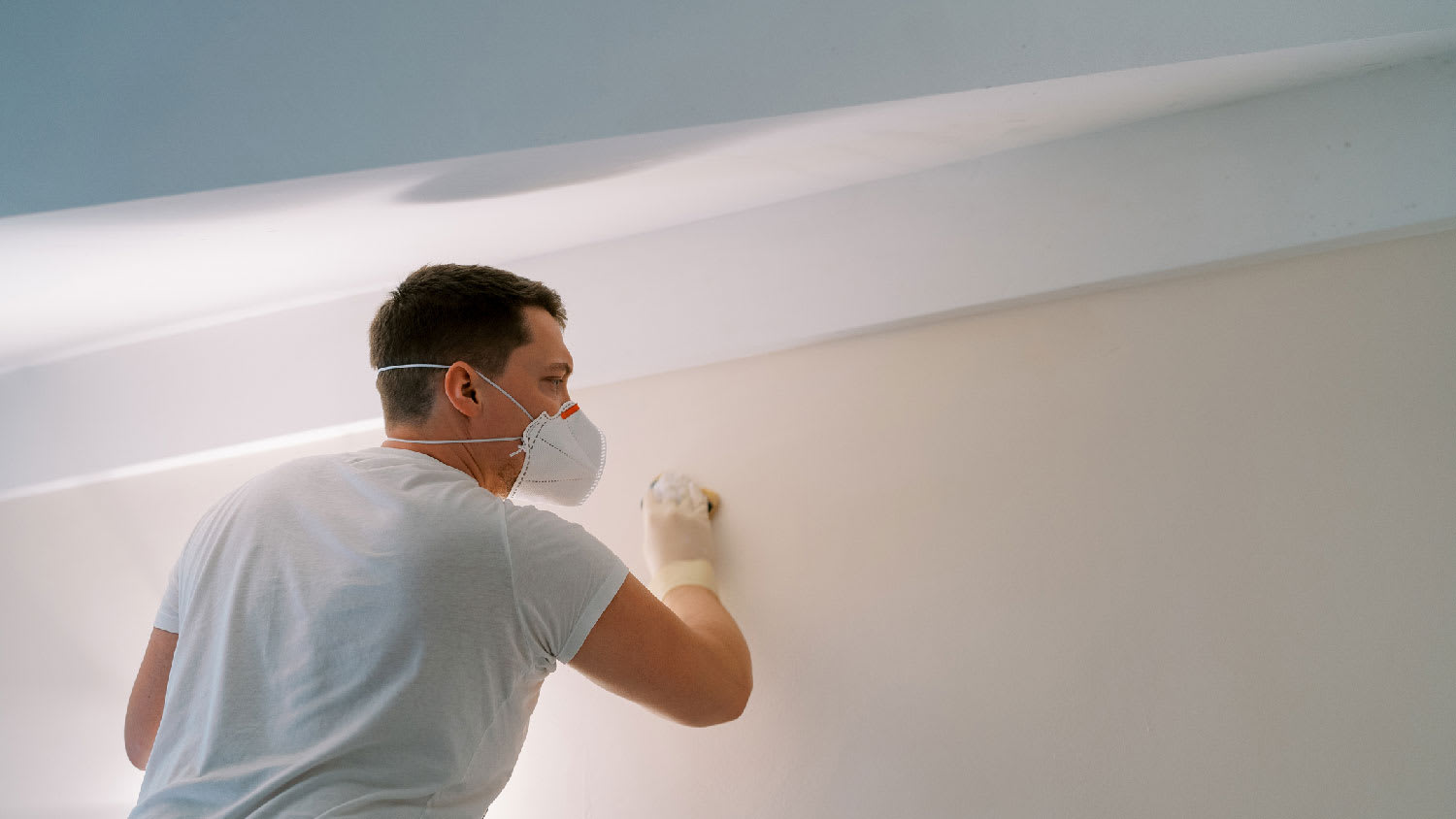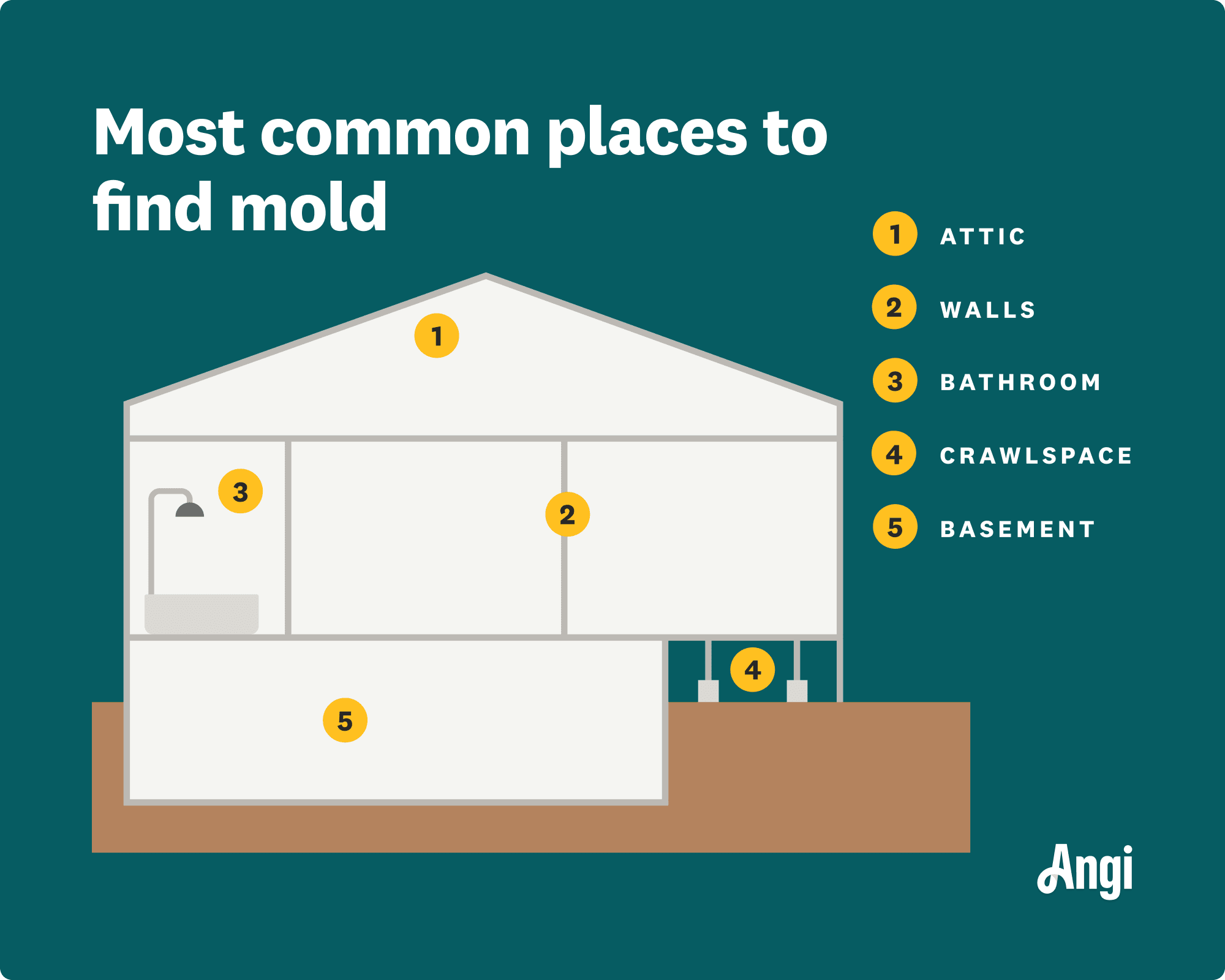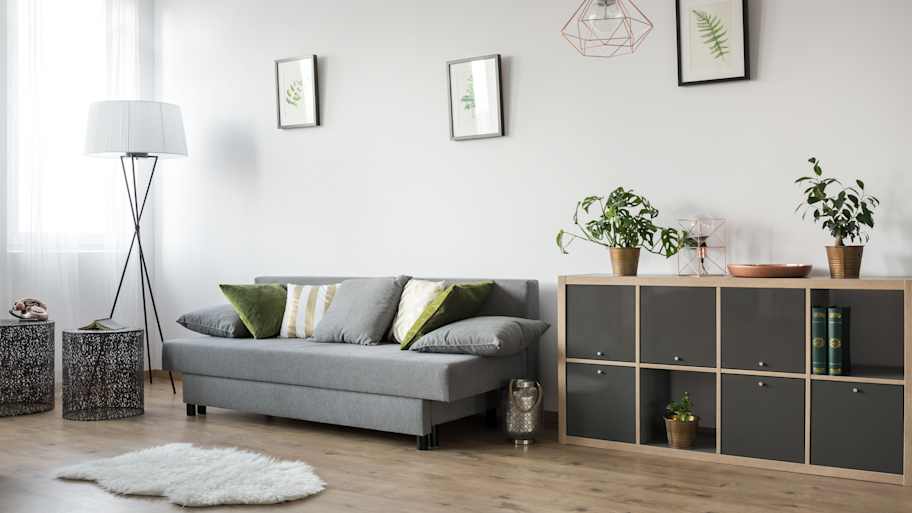
The cost of a mold inspection might seem high, but it’s one of the best investments you can make for your health and home. Read on to learn cost-saving tips.
Mold remediation costs in Seattle, Washington, cost $1,988 on average, but it can cost between $1,008 and $2,967, depending on location, type, and size of infestation.


Seattle’s rainy weather and high humidity levels, along with a large percentage of properties with basements, make homes susceptible to mold growth.
Mold issues must be disclosed when selling a home in Seattle, but if you decide to leave the problem as-is, your home value could decrease by 20% to 37%.
In addition to hiring a full-service mold remediation company, you may need additional pros complete the project.
Mold can grow in most climates, but in rainy Seattle, it can appear in exterior areas of the home with water damage. Missing roof shingles, clogged gutters, and drainage issues can all lead to major mold growth. Fortunately, mold remediation costs in Seattle are about 17% less than the national average. Costs range between $1,008 and $2,967, with an average of $1,988.
Find out how much to budget for your mold remediation project based on the location, the severity of the damage, inspections, and more.
Here are the major cost factors to consider for your mold remediation project in Seattle, Washington.

In Seattle, where there’s rain 150 days out of the year, coupled with high humidity, mold can easily grow. Whether your mold growth is due to rain seeping into the home through damaged areas, a malfunctioning appliance, or a plumbing problem, finding the culprit is the first step.
The cost of the remediation depends on the location, with harder-to-reach spots, like inside walls and HVAC, costing more. Even without a water leak, basements have poor ventilation and high moisture levels, which make it easy for mold to thrive.
| Location | Average Remediation Cost |
|---|---|
| Attic | $825–$3,300 |
| Basement | $425–$2,475 |
| Crawl space | $425–$1650 |
| Wall | $825–$16,550 |
| HVAC systems | $2,475–$8,275 |
| Bathroom | $425–$825 |
| Whole house | $8,275–$24,800 |
Most mold removal professionals charge $10 to $25 per square foot. So, if you're removing mold from a 100-square-foot area, you can expect to pay around $1,000 to $2,500. But factors like where the growth is and the mold type can affect how much it costs to remove it.
Mold inspection costs between $300 and $1,075. Mold testing is key to determining whether you have the presence of mold in your home, plus the extent of the infestation. You’ll need to hire a mold inspector to test surface samples in your home before moving forward with remediation.
Regardless of how it affects remediation costs, you need to know which type of mold you have in your home for your safety. In Seattle, the most common types include Stachybotrys (black mold), Aspergillus, Cladosporium, and Penicillium. If a mold test reveals the presence of black mold, your mold remediation pro will likely charge more to remove it based on the additional cost of protective equipment.
| Type of Mold | Description |
|---|---|
| Alternaria | A common mold found outside in spring and summer, it primarily attacks plants. |
| Aspergillus | White fuzz that turns black over time, but it can also be brown, yellow, and green. It can cause respiratory illness and requires immediate remediation. |
| Aureobasidium | Grows on painted surfaces and behind wallpaper. It’s often pink and causes allergies. |
| Chaetomium | Extremely toxic and can cause brain infections and various cancers. A white fuzz that turns to blue or green. Requires immediate professional removal. |
| Cladosporium | Commonly found in basements and HVAC systems. It can cause mild allergy symptoms. |
| Fusarium | One of the most toxic molds; requires professional removal once discovered. Often caused by water leaks, it is commonly found in walls and floors. |
| Penicillium | Blue-green and grows in areas of elevated moisture where water damage has occurred. It can be very dangerous. |
| Serpula lacrymans | Causes severe damage to wood and spreads fast. Unfortunately, this mold is usually found after it has spread widely. |
| Stachybotrys chartarum (black mold) | Extremely dangerous, not to mention fast-spreading. Requires immediate removal by a professional. |
| Trichoderma | Grows rapidly in wood, plants, and soil. Commonly found in HVAC systems and not as widely discovered as others in this list. |
| Ulocladium | A dark-colored mold found near windows and in kitchens and basements. Looks like black mold, but it isn’t as toxic to humans. Nevertheless, it still requires removal. |
If left untreated, mold can damage your drywall, carpeting, and flooring. Replacing or repairing your walls or floors will add costs to the removal.
Here are some cost estimates for different types of mold damage repairs in Seattle, Washington:
| Repair Type | Average Cost |
|---|---|
| Drywall | $825–$2,400 |
| Carpet | $650–$2,150 |
| Flooring | $175–$450 |
The Environmental Protection Agency (EPA) recommends only removing mold yourself if it covers less than 10 square feet. Otherwise, it's best to call a mold remediation company in Seattle, Washington.
Mold inspections cost $300 to $1,025. The inspector will conduct visual and lab tests to determine whether you have a mold infestation and, if so, the type, location, and severity of the issue. Additionally, the labor costs for mold remediation range from $75 to $120 hourly, depending on factors like the types of mold present and whether it’s easily accessible.
Washington doesn’t require licensing for mold remediation pros. However, you can look for pros who have an Institute of Inspection Cleaning and Restoration Certification (IICRC). The IICRC offers Mold Remediation Specialist and Water Damage Restoration Technician certifications.
Seattle doesn’t require permits for mold inspections and remediation, unless the remediation involves projects that necessitate building, electrical, or plumbing permits. Note that minor repairs and alterations that cost less than $6,000 in a six-month period don’t require permits, unless you’re working on load-bearing supports. This may apply if you need to replace sheetrock and insulation or install new flooring.
However, you’ll need permits for larger projects or projects that require electrical or mechanical work. For example, if your old HVAC system is moldy and needs to be completely replaced, you’ll need a mechanical permit.
For specialized work like electrical, the company will likely hire a subcontractor to handle the job, including the permitting process.
While some mold remediation companies take care of everything from beginning to end, some only take on the testing and remediation, which might leave you with some additional projects to complete. For example, if your mold damage was due to a roof leak from missing shingles and heavy rain, you may need to call a roofer.
Here are some pros you may need to hire:
Framer: $7–$16 per square foot
Drywall installer: $1.50–$3 per square foot
Painter: $1–$2 per square foot
Insulation installer: $0.40–$6.75 per square foot
HVAC installer: $5,000–$12,500
Flooring installer: $3–$13 per square foot
Subfloor installer: $3–$10 per square foot
Crawl space encapsulation company: $5,000–$15,000
Foundation company: $2,500–$8,200 for foundation sealing
Roofing company: $360–$1,550 per leak
Mold remediation is essential to restoring a healthy living environment. So, while remediation doesn’t increase the value of your Seattle home, it helps you maintain it—otherwise, a mold infestation can lead to a loss in home value. If you decide to leave the mold as-is for future buyers to handle, your home’s value can dip 20% to 37%. Washington requires sellers to disclose known mold issues and water intrusion, so keep in mind if you plan to put your house on the market.
Home is the most important place on earth, which is why Angi has helped more than 150 million homeowners transform their houses into homes they adore. To help homeowners with their next project, Angi provides readers with the most accurate cost data and upholds strict editorial standards. We survey real Angi customers about their project costs to develop the pricing data you see, so you can make the best decisions for you and your home. We pair this data with research from reputable sources, including the U.S. Bureau of Labor Statistics, academic journals, market studies, and interviews with industry experts—all to ensure our prices reflect real-world projects.
Want to help us improve our cost data? Send us a recent project quote to [email protected]. Quotes and personal information will not be shared publicly.
From average costs to expert advice, get all the answers you need to get your job done.

The cost of a mold inspection might seem high, but it’s one of the best investments you can make for your health and home. Read on to learn cost-saving tips.

If you found mold on window sills in your home, keep reading to learn how to remove the mold and avoid it from forming in the future.

Learning how to remove mold from wood furniture is a worthwhile DIY project because you can save your expensive wood pieces. Learn more about safely removing mold from wood furniture.

Worried about mold behind your drywall? Learn how to spot the signs and when it’s time to call in a professional, plus how to prevent it in the future.

A mold inspection is your first line of defense against a mold problem. Here’s what to expect from your visit and how to prepare.

Acceptable moisture levels in drywall depend on the relative humidity in your home and a few other factors. Use this guide to learn what's okay and what's not.